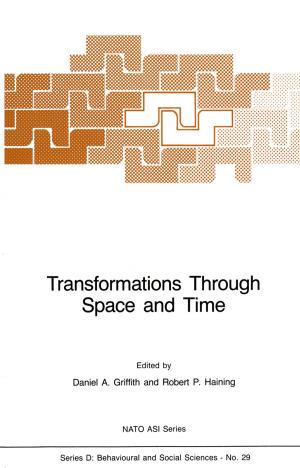Electrifying Atmospheres: Charging, Ionisation and Lightning in the Solar System and Beyond
Nonfiction, Science & Nature, Science, Earth Sciences, Geology, Physics, Astronomy| Author: | Karen Aplin | ISBN: | 9789400766334 |
| Publisher: | Springer Netherlands | Publication: | May 14, 2013 |
| Imprint: | Springer | Language: | English |
| Author: | Karen Aplin |
| ISBN: | 9789400766334 |
| Publisher: | Springer Netherlands |
| Publication: | May 14, 2013 |
| Imprint: | Springer |
| Language: | English |
Electrical processes take place in all planetary atmospheres. There is evidence for lightning on Venus, Jupiter, Saturn, Uranus and Neptune, it is possible on Mars and Titan, and cosmic rays ionise every atmosphere, leading to charged droplets and particles. Controversy surrounds the role of atmospheric electricity in physical climate processes on Earth; here, a comparative approach is employed to review the role of electrification in the atmospheres of other planets and their moons. This book reviews the theory, and, where available, measurements, of planetary atmospheric electricity, taken to include ion production and ion-aerosol interactions. The conditions necessary for a global atmospheric electric circuit similar to Earth’s, and the likelihood of meeting these conditions in other planetary atmospheres, are briefly discussed. Atmospheric electrification is more important at planets receiving little solar radiation, increasing the relative significance of electrical forces. Nucleation onto atmospheric ions has been predicted to affect the evolution and lifetime of haze layers on Titan, Neptune and Triton. For planets closer to Earth, heating from solar radiation dominates atmospheric circulations. Mars may have a global circuit analogous to the terrestrial model, but based on electrical discharges from dust storms, and Titan may have a similar global circuit, based on transfer of charged raindrops. There is an increasing need for direct measurements of planetary atmospheric electrification, in particular on Mars, to assess the risk for future unmanned and manned missions. Theoretical understanding could be increased by cross-disciplinary work to modify and update models and parameterisations initially developed for a specific atmosphere, to make them more broadly applicable to other planetary atmospheres. The possibility of electrical processes in the atmospheres of exoplanets is also discussed.
Electrical processes take place in all planetary atmospheres. There is evidence for lightning on Venus, Jupiter, Saturn, Uranus and Neptune, it is possible on Mars and Titan, and cosmic rays ionise every atmosphere, leading to charged droplets and particles. Controversy surrounds the role of atmospheric electricity in physical climate processes on Earth; here, a comparative approach is employed to review the role of electrification in the atmospheres of other planets and their moons. This book reviews the theory, and, where available, measurements, of planetary atmospheric electricity, taken to include ion production and ion-aerosol interactions. The conditions necessary for a global atmospheric electric circuit similar to Earth’s, and the likelihood of meeting these conditions in other planetary atmospheres, are briefly discussed. Atmospheric electrification is more important at planets receiving little solar radiation, increasing the relative significance of electrical forces. Nucleation onto atmospheric ions has been predicted to affect the evolution and lifetime of haze layers on Titan, Neptune and Triton. For planets closer to Earth, heating from solar radiation dominates atmospheric circulations. Mars may have a global circuit analogous to the terrestrial model, but based on electrical discharges from dust storms, and Titan may have a similar global circuit, based on transfer of charged raindrops. There is an increasing need for direct measurements of planetary atmospheric electrification, in particular on Mars, to assess the risk for future unmanned and manned missions. Theoretical understanding could be increased by cross-disciplinary work to modify and update models and parameterisations initially developed for a specific atmosphere, to make them more broadly applicable to other planetary atmospheres. The possibility of electrical processes in the atmospheres of exoplanets is also discussed.















